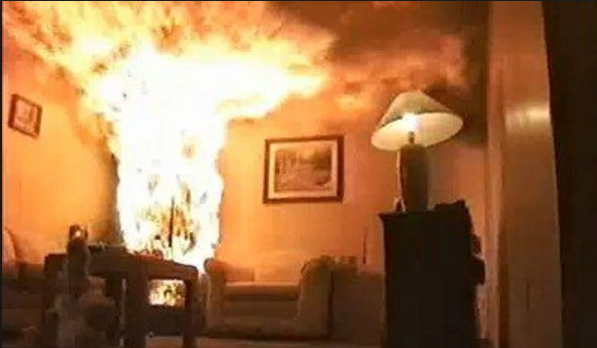
An article in this month’s Boston Magazine tells how chemicals released from the items in homes as they are burning are more deadly than the fire itself.
Today’s homes and offices are jam-packed with plastics, electronics, and furniture covered in flame-retardants. “When they combust,” Finn explains about household goods, “they are extremely toxic.” That means the smoke firefighters are exposed to is often loaded with a litany of septic chemicals—formaldehyde, vinyl chloride, chlorophenols, dioxins, trichloroethylene, ethylene oxide, polychlorinated biphenyls, methylene chloride, orthotoluidine, and arsenic, to name a few. Alone, any one of these may be harmful; mixed together they could make a potent cocktail of carcinogens with the capacity to do untold damage to the body’s organs, cells, and DNA.
It might seem odd that flame-retardants—ostensibly a firefighter’s best friend—would be a problem. They are, after all, designed to help slow the spread of fires or prevent them from starting in the first place. For decades, chemical mixtures were added to couches, mattresses, drapes, highchairs, cribs, televisions, computers, and countless other household items. But these chemical mixtures are not foolproof. They become ineffective at high temperatures, and when they go up in smoke they can take on the form of carcinogenic particles that are easy to inhale and capable of seeping through skin and into the bloodstream.
Read more at…
BOSTON MAGAZINE: Why Cancer Is Killing Boston’s Firefighters



